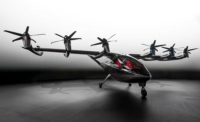Washington State Seeks to Automate Apple Orchards
Apples require a system that’s delicate, gentle and fast.

This month, the Washington State Cougars face off on the gridiron against their arch-rival, the Washington Huskies. The winner receives the coveted Apple Cup and bragging rights in the Pacific Northwest.
However, Manoj Karkee, Ph.D., an associate professor of biological systems engineering at Washington State, is focused on apple orchards instead of football fields this time of the year. He’s developing a robotic system for picking apples.
That’s important, because apples are a big business in Washington. Every year, the state produces more than $5 billion worth of the crunchy, sweet fruit.
Up to 18 billion apples are harvested annually in Washington, but picking them is a labor-intensive endeavor. Orchard owners often can’t find enough people to pick Honeycrisp, Red Delicious and other varieties.
Working with the Center for Precision and Automated Agricultural Systems (CPAAS), Karkee focuses on control, machine vision and sensing technologies for agricultural automation and robotics.
“[The goal is to create] novel solutions in precision agriculture, agricultural mechanization, automation and robotics to support the specialty crop industry in Washington,” says Karkee. “[We aim to] improve quality and yield, and reduce the use of human labor while improving the working environment for the rest of the workers.”
Many types of agricultural applications can be difficult to automate. “Because of the highly uncertain and variable outdoor weather conditions, developing robust robotic solutions is challenging,” Karkee points out.
“Harvesting apples, pruning red raspberry canes and killing intra-row weed in vegetable crops are some of the specific examples where developing commercially viable robotic machines have been challenging,” adds Karkee. “Engineers around the world, including CPAAS, have been very active in recent years in these areas and we expect that some of these tasks will be automated in the near future.”
For apple picking applications, Karkee and his colleagues have been experimenting with a machine that is gentle and picks fruit fast enough to make it economically viable for commercial use.
“Unlike in factories and other industrial applications, apples require a system that is delicate enough to pick the fruit without bruising it, while also maneuvering around tree branches, leaves and other obstructions,” explains Karkee.
“That’s why it is more challenging than robotics used in industrial applications,” adds Karkee. “It takes much more creative solutions to make it happen in orchards.
“The major focus of our work has been to generate new knowledge, tools and technologies that could help improve the robustness, efficiency and speed of robotic apple harvesting systems, while keeping the cost at an affordable level,” says Karkee.
Karkee and his colleagues recently developed a collaborative dual-robot system for picking and collecting fruit. It features two arms and hands that delicately grasp and twist apples off a tree like humans do. One set of arms and hands is used for picking, while the other collects the fruit.
The robot has seven motors and uses a stereo vision sensor. Its vision system incorporates cameras and sensors to capture an image of the tree. Using algorithms to identify color, shape and texture, it differentiates apples from the rest of the plant and determines fruit location so the robotic arm can be directed for picking.
“We have been collaborating with FFRobotics (a company developing and commercializing robotic harvesting machines) to further advance the technology and potentially commercialize it,” says Karkee. “We also had initial discussion and provided some collaborative support to another start-up (Abundant Robotics Inc.) trying to commercialize a different type of robotic harvesting machine.”
Looking for a reprint of this article?
From high-res PDFs to custom plaques, order your copy today!





